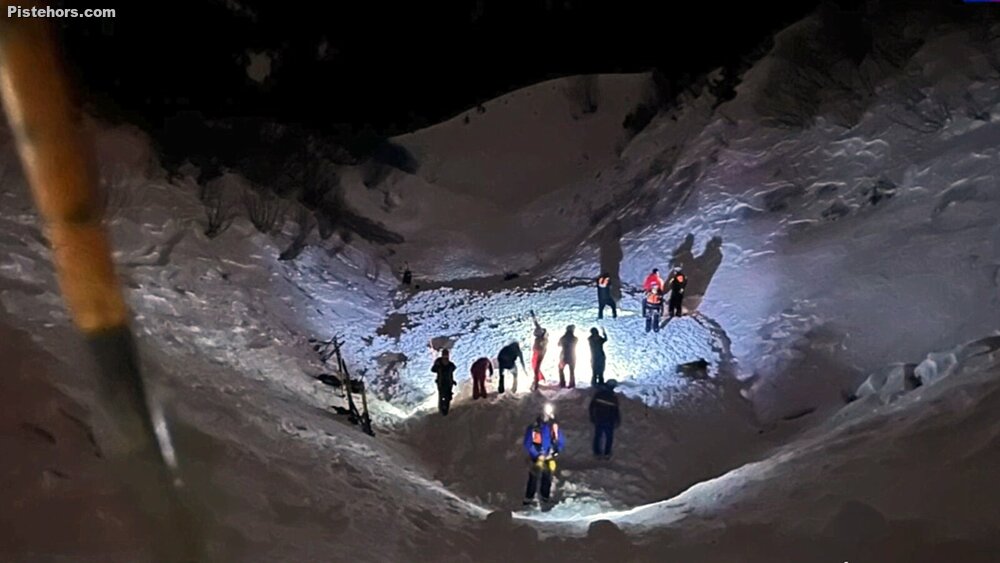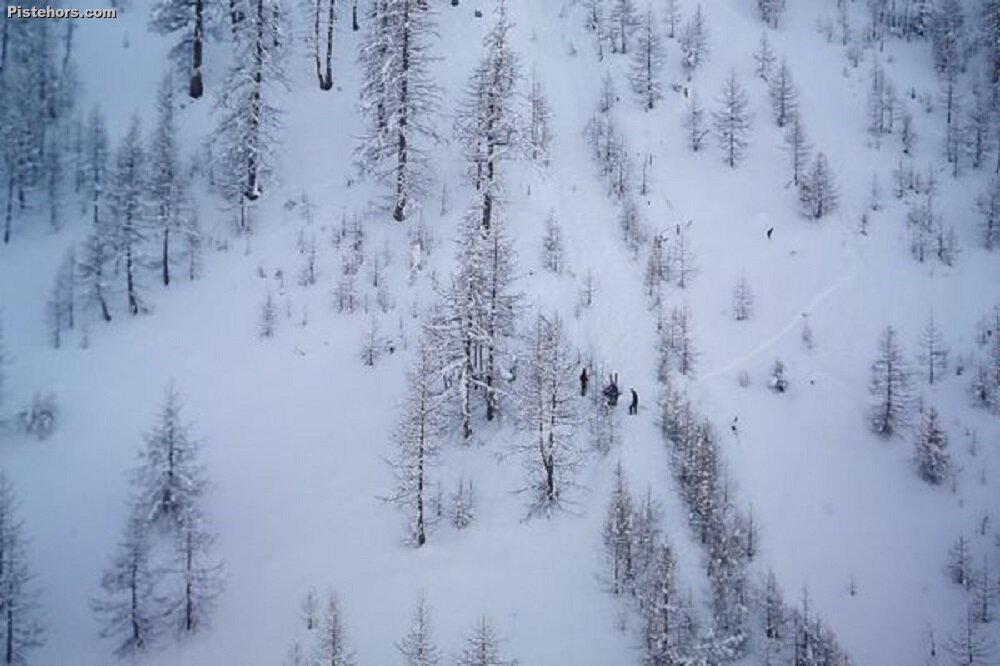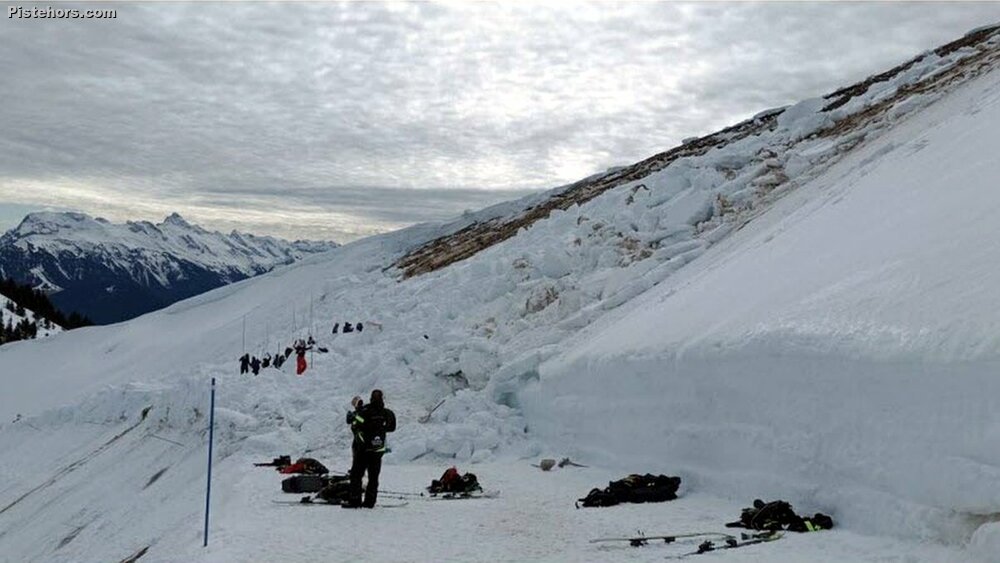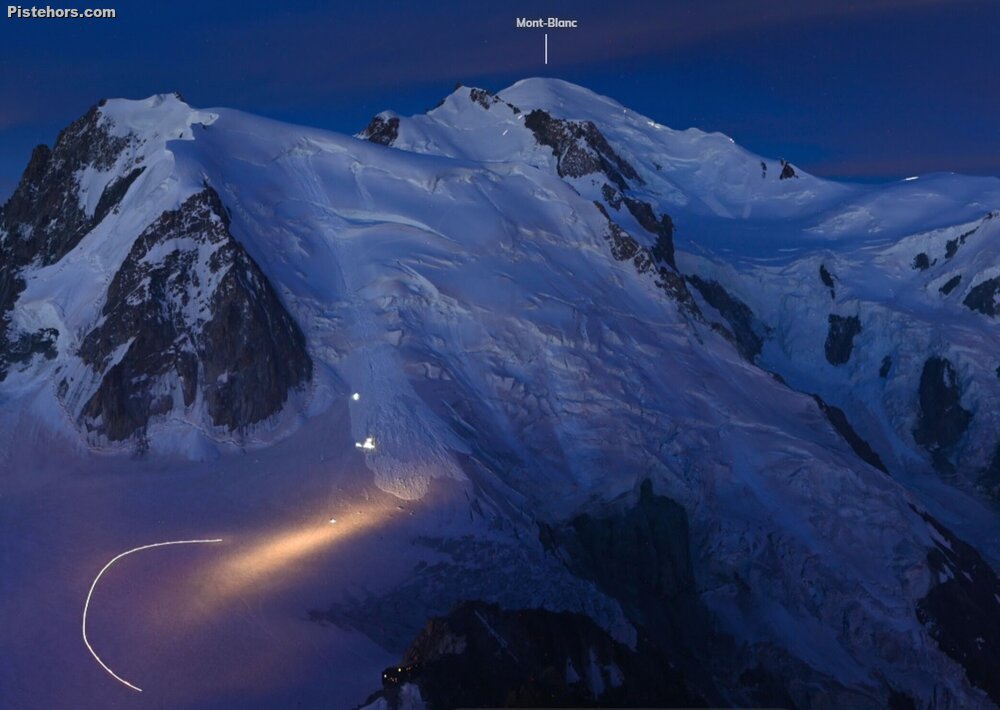With the first snows of autumn already on the summits and the start of the season just around the corner it is a good time to look back at last year’s avalanche incidents in France. There were 16 deaths in 10 avalanches. 43 were people notified as injured. This is generally the case where the rescue services were called and doesn't cover the total number of incidents. 5 of the fatal avalanches occurred at risk 3 (considerable), 3 at risk 2 (moderate) and in two cases no bulletin was available, one was out of season and the other in a mountain range where there is no detailed avalanche bulletin. This is less than the average of 26 for the last 10 years. What are the reasons for these relatively good figures?
There were no fatalities in the Savoie or the whole of the French Pyrenees. The figure for the Savoie is exceptional, it is normally the most dangerous department with its large ski areas, cold, high mountains and changeable frontier weather.
The department had exceptional snow cover, but largely above 2600-2700 meters. Only the very highest ski lifts climb this far and ski tourers rarely spend much time above this altitude. The situation was different lower down. There was not much snow below 1800 meters, the risk was frequently 2 (moderate) under 2000 meters.
The Haute Tarentaise sector was typical of the conditions. Just a single day at risk 1 (low - 30 January), 74 days at risk 2 including 19 consecutive from the 2 to 20th February and 96 days at risk 3; 19 in December, 20 in January, 10 in February during the French winter holidays, 16 in March and 20 in April. Finally 10 days at risk 4 and none at risk 5. In the Savoie as a whole there was only 1 day at risk 5 and then only for the Haute-Maurienne sector.
Experts didn’t find the conditions that stable “We’ve seen better” according to Frédéric Michel-Villaz, president of the Department’s alpine clubs “there were some temporary weak layers at times, the rescue services intervened in 17 incidents, 15 at risk 3. I’m somewhat surprised, but very pleased, there were no deaths.”
The good figures for this season were, at times, more due to luck than judgment. On the 1st April 2024 a 34 year old off piste skier was completely buried by an avalanche at Val Thorens. The risk was 3. The avalanche occurred shortly after the opening of the lifts in the Portette sector. The victim didn’t have an avalanche transceiver or any other equipment. The piste services were on the scene within 3 minutes and after spotting a clue on the surface of the debris were able to rescue the skier with no injuries.

1) The first fatalities came relatively late into the season, on the 28th of December 2023. A group of off piste skiers were descending a snow filled gully off Mont Joly in the Haute-Savoie when an avalanche from above caught them in this natural terrain trap. Two of the group were buried by the slide and a long, complicated rescue operation only found them late in the evening. Neither had an avalanche beacon. One of the victims was located using a Recco transceiver. The group were with a local ski instructor but it is not known if he was acting professionally. The avalanche risk was 2, the bulletin warned of a thin, weak layer with the principal risks being windblown snow and old, hard slabs.
2) The period from the 4-8th January saw a cluster of avalanches. Two of the incidents were fatal. On the 4th January a ski tourer equipped for speed-riding but descending on skis at the time was caught by an avalanche on the North West face of the glacier Rond in the Mont Blanc mountains. The accident occurred at around 3800 meters altitude. The avalanche risk was 3 (Considerable) with a warning of sensitive slabs formed by the W to SW wind of the previous day although the risk was of hard slabs at high altitude.

3) On the 8th a lone skier was found dead after an extensive search operation near the ski resort of Sauze in the Alpes de Haute-Provence. He had been ski touring on Sunday when he was buried by an avalanche at around 2500 m. The avalanche risk was 3 and the bulletin warned of soft slabs formed during recent snowfall but that a lone skier above 2200 meters could still trigger a small to medium avalanche on all slope angles and this could propagate to a weak layer buried at 40-60cm on NW to SE aspects.
4) On the 20th January a group of four skiers, local to the valley, were caught by an avalanche in the Grossailes sector near the ski resort of Le Tour close to Chamonix. The avalanche occurred on a SW slope at 1950 meters. A completely buried skier was killed by the slide. The avalanche risk was 3 above 1800m. The bulletin warned of blown snow on a persistent weak layer and up to 70cm of fresh snow.
5) After a long hiatus, as seen above the first 20 days of February had very stable snow conditions over much of the Alps, there was an avalanche on the 23rd February at 2400 meters on the east face of the crête de l’Arpion in the Southern Alps that caught two ski tourers. Rescue workers had to reach the avalanche on foot due to bad weather. One of the victims, completely buried, had been killed. The avalanche risk was Considerable following fresh, windblown snow with sensitive large slabs.

Also of note, a skier had a lucky escape after being buried skiing on piste on an open run at Praz de Lys on the 14th February.
6) On the 25th an avalanche caught a group of ski tourers at le Mont Dore in the Massif Central. They were climbing on foot, roped up, at 1600 meters, on the steep north-east facing slopes at the top of the valley. The group were from a local French Alpine Club and accompanied by a guide. The rescue operation was complicated by the weather conditions and visibility. The 4 fatalities were located using their avalanche beacons buried under 4 meters of snow. The resort estimated the risk was 3 with southerly winds gusting up to 70km/h and a snow/rain limit at 1400 meters with considerable fresh snow above this altitude. Avalanches are comparatively rare in the range but not unknown.
7) There was another climbing fatality on the 8th March when a group of 7 students accompanied by a guide were caught by a wind slab avalanche at 1750 meters on the NW slopes of the Gerbier above Villard des Lans in the Vercors. The avalanche risk was 2 above 1700 meters. The bulletin warned of some small slabs close to ridges and on NW to NE slope aspects formed by wind blown snow over the preceding days but not easy to trigger.
8) On the 19th March a 60 year was killed after a fall on steep slopes caused by a small avalanche at 3200 meters under the Pointe Yeld in the Mont Blanc mountain range. The avalanche risk was 3 at the time of the avalanche due to wind blown snow.
9) On the 25th of April a group ski tourers triggered an avalanche in the steep NE couloir of the aiguille de Tricot in the Mont Blanc range. One member of the group was killed as a result of injuries. The victim was well known locally and competed in the Freeride World Tour in 2022. The avalanche risk was moderate (2/5) but warned of small (size 2) soft slabs at altitude formed due to the 20cm of fresh snow under the influence of the north then west wind on Wednesday.

10) Finally on the 5th August, 15 climbers were hit by an avalanche on the Mont Blanc du Tacul on the summit route to Mont Blanc killing 1 and injuring 4. There was no avalanche bulletin. Avalanches on this route are not uncommon and are often caused by serac falls.
There was also a large avalanche on the Dome des Ecrins at 3900 meters altitude on the 6th June involving 15 climbers injuring 4.
The generally good figures for last season are largely due to the poor snow conditions at lower altitudes and stable weather over a long period during winter. Where there was snow, at altitude, there were still incidents. The 8 climbing fatalities in 3 incidents illustrates how vulnerable climbers are. However the number of incidents is also unusually high for this activity; in part due to the good snowfall during spring and early summer.
Once again there were fatalities due to skiing alone and lack of avalanche transceivers. In both cases the delay in rescue can prove fatal. Poor weather conditions also delayed search and rescue in a couple of incidents.
In a season with poor snowfall wind and persistent weak layers were contributary factors and both noted in the bulletin in a number of incidents.